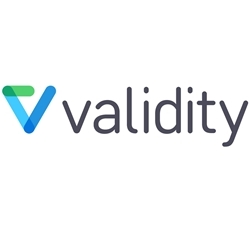In a new report, "Email Data Quality: Compliant, Correct & Complete," we viewed data-quality practices through the lens of what type of data platform was being used. We asked marketers, "Where does your organization currently store customer and email data?"
Marketers responded as follows:
- Customer relationship management (CRM) system: 53%
- Email service provider (ESP) platform: 50%
- Customer data platform (CDP): 33%
Those responses aren't mutually exclusive; businesses could be using two or even all three of the solutions in conjunction with each other.
The scale of the CDP response stood out to us. Although CDP approach to managing customer data is not brand new, it's been on the periphery of marketing consciousness. Apparently, not anymore!
What Is a CDP?
Customer data platforms evolved from a variety of mature markets, including multichannel campaign management, tag management, and data integration, according to Gartner. And Wikipedia provides a good definition of CDP:
A collection of software which creates a persistent, unified customer database that is accessible to other systems. Data is pulled from multiple sources, cleaned, and combined to create a single customer profile. This structured data is then made available to other marketing systems.
At the risk of massive oversimplification, while also allowing for the evolution of the definition of customer data, we can say the CDP is a solution enabling businesses to get all their customer data under one roof.
CDPs are built to handle multiple data points from many sources. They collect both online and offline customer data; that could include anonymous visitors as well as personalized, specific customer identifiers.
There are already established vendors in the CDP space, and G2's excellent summary lists well-known names, including Exponea, Emarsys, Listrak, Tealium, Optimove, and Salesforce Interaction Studio (among others). Moreover, recent analysis showed that Emarsys customers who also use Validity's Certification allow-list see, on average, open rate uplifts of 28% and click-rate uplifts of 35%. Users of CDP platforms clearly understand the important relationship between data and technology.
CDP Users and Marketing Effectiveness
The implicit assumption is that CDP users are more sophisticated in managing their customer data, thinking of it as a business asset, and looking to maximize their return on investment. Our report supports that view:
- Businesses using CDPs are significantly more likely to use double opt-in as their email permissioning model (1.5X higher than the benchmark response). They are also more likely to use real-time validation tools like BriteVerify (1.7X higher). Having made a significant investment in their customer data capabilities, CDP users are strongly focused on populating their platforms with high-quality data.
- Use of preference centers is an extremely important part of CDP users' toolkits for customer data collection (1.6X higher). That highlights the value of progressive registration: re-visiting customers regularly to learn more about their needs and interests, then using that info to craft relevant content and offers.
- Even more important, CDP users actually harness that data to drive their communications. Remember the core GDPR principle of "minimization": In short, don't collect anything you're not going to use! Use of subscriber preferences to drive customer segmentation is 1.5X greater from CDP-user respondents.
- That approach also informs how CDP users measure data quality, with use of "engagement" as a primary key performance indicator (KPI) almost 10% more likely for CDP users. These businesses intuitively know that declines in engagement may have poor data quality at their root, and they appreciate the importance of the engagement metric.
- Because these businesses have a strong handle on their data, they are better positioned to measure the financial impact of their data-driven marketing. CDP users' ability to calculate email cost per acquisition (CPA) is 1.15X higher than their peers', while ability to calculate return on investment (ROI) is 1.2X higher.
What does all that mean for marketing effectiveness? Since the COVID-19 pandemic changed our lives, businesses have been rethinking the way they communicate with customers. As the recent DMA awards highlighted, being able to use high quality customer data to implement these shifts authentically and credibly is vital.
The additional breadth and depth of customer data CDP users have unquestionably put them in pole position when dealing with this challenge.
Takeaways for Those Who Don't Use CDPs...
What can non-CDP users learn from the above insights that can be integrated into their own data-quality strategies?
- Learn from the law. In Europe, GDPR effectively wrote many established data best-practices into law. As a result, more robust permissioning, clearer setting of expectations, and greater provision of choice all established higher levels of trust, with consumers more predisposed to provide higher quality personal data as a result. Smart marketers don't need to wait for new laws before they make these changes; they'll benefit from doing so right now!
- Promote preferences. Many marketing programs operate great preference centers, allowing customers to define their interests, select what content they are most interested in, and determine how frequently they want to receive it; but they are hidden away, and therefore few people use them. Customers should be encouraged to use their preference centers—because companies benefit from relevant and up-to-date customer data will drive greater engagement.
- Have value conversations. Our report calculates customer lifetime value (CLV) at an impressive ± £35/$50, but value is increasingly a two-way conversation. It's not just a question of how much customers spend but also the value they extract from the relationship. That value can be specific (discounts, free delivery, etc.) but it can also be less tangible (useful information, additional benefits, etc.). When the value exchange is in equilibrium, customer relationships last longer and CLV increases. Programs should regularly restate the value they offer to achieve that equilibrium.
* * *
Want to learn more? Sign up for our next webinar, when we'll consider the rise of the CDP, plus many other fascinating data quality insights, with expert guests Tim Bond (Data & Marketing Association) and Kate Barrett (eFocus Marketing).




